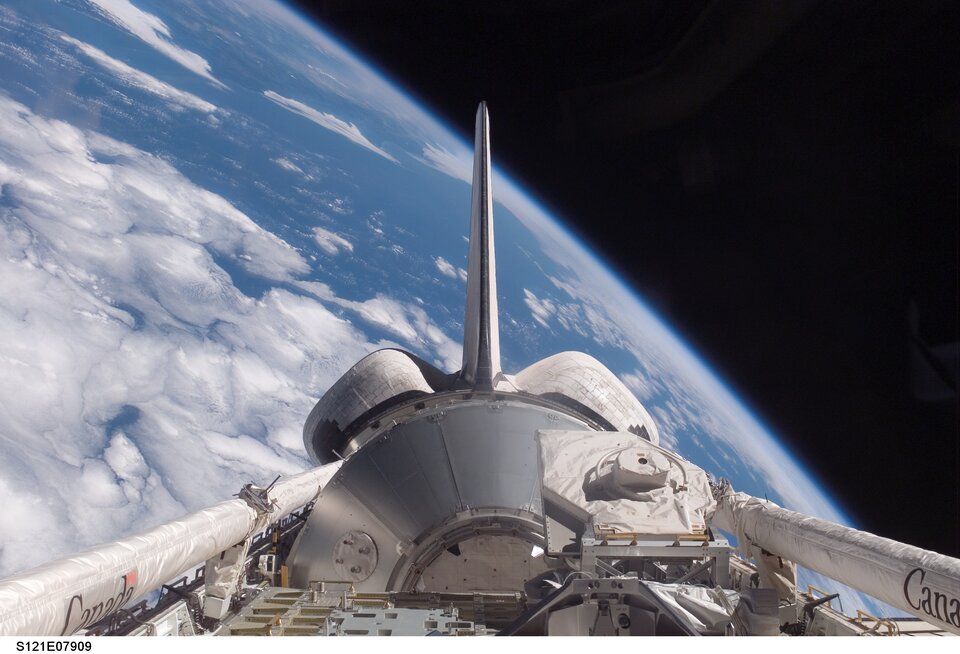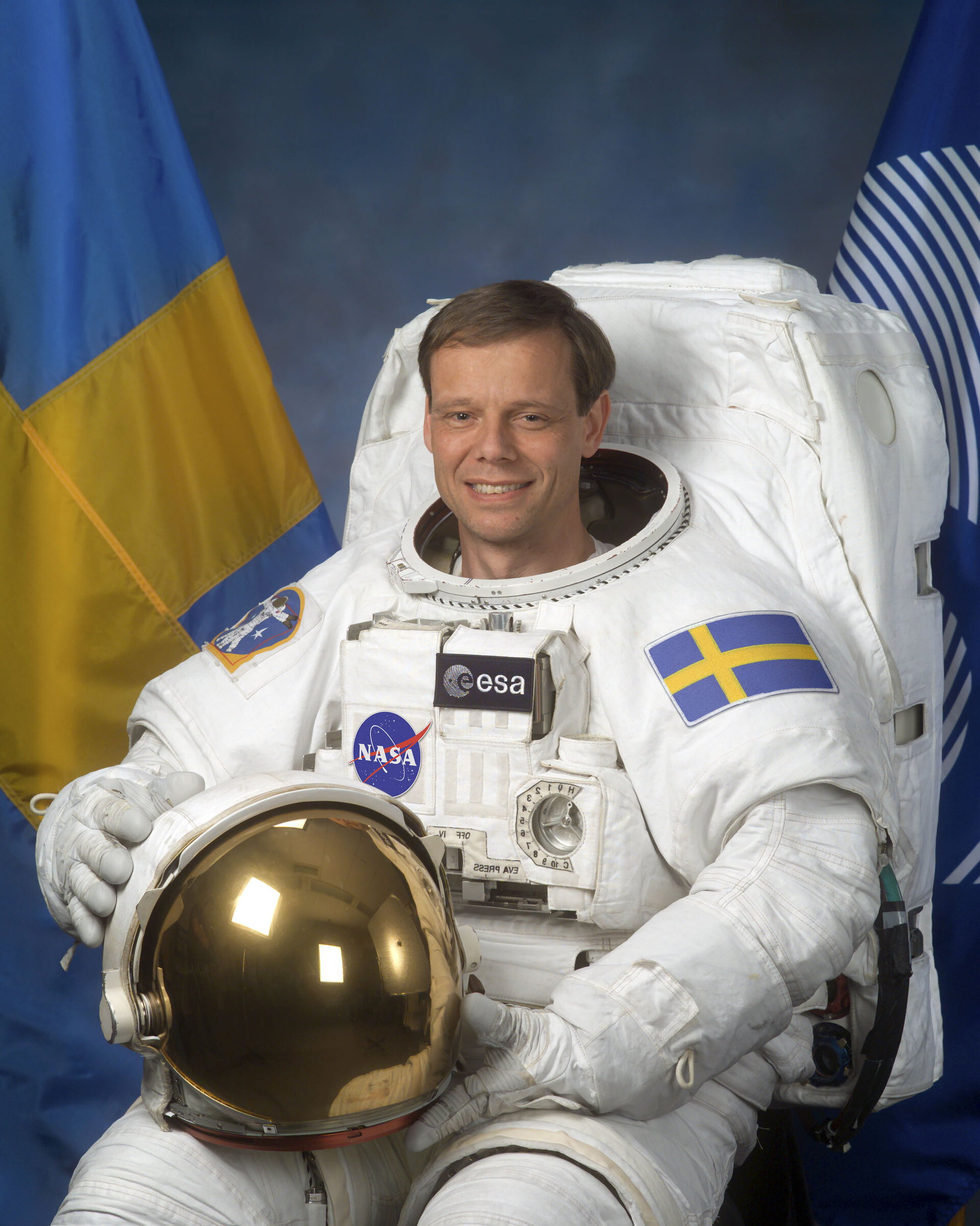My mission in space
During his eleven days in space, Swedish ESA astronaut Christer Fuglesang will, amongst other things, carry out two spacewalks and perform scientific experiments. Here he describes his entire mission.
A shortened version of this text has been published in the Swedish magazine 'Populär Astronomi' and the full text in Christer Fuglesang’s own newsletter earlier this year. Christer has now revised the text in order to convey the most recent information about the mission.
Flight day 1
Launch of Discovery
On the 7 December 2006, at the earliest, we, the crew of STS-116/ISS-12A.1, will be strapped securely into our seats on Space Shuttle Discovery.
Up on the flight deck sit, or rather lie on their backs, Commander Mark, forward and to the left, beside him is the pilot BillyO and behind them MS2 (meaning Mission Specialist) Beamer and MS1 Nick.
Below on the mid-deck sit/lie, from the left, MS3 Christer, MS4 Joanie and MS5 Sunni Williams, who we will transfer to the ISS. I sit closest to the escape hatch and, if there should be a really major problem that would result in us having to parachute jump, I have the responsibility of blowing the escape hatch open and preparing the evacuation jump.

Six seconds before lift-off the Space Shuttle's three main engines are started; those that are fed with fuel – liquid oxygen and liquid hydrogen – from the enormous external tank. If all three engines are functioning steadily at T=0 the solid fuel rockets are then ignited (SRB=Solid Rocket Booster) and the entire package of around 2000 tonnes lifts off from the launch platform at the Kennedy Space Centre at Cape Canaveral, Florida.
The journey up into space takes only 8 minutes and 20 seconds! The Space Shuttle has then reached a height of 220 km and a speed of 7.87 km/s. Note that the kinetic energy that is generated is 14 times larger than the potential! It isn’t the height that is the major problem; it is the generation of enough speed so that you go into orbit around the Earth instead of falling back down to it. During the last minute the acceleration reaches 3G and the engine power is sequentially reduced, because the Space Shuttle isn’t designed to tolerate more than 3G.
When the three engines are suddenly shut off, when we have reached the necessary speed, we go directly into a state of weightlessness. For many it is a fairly euphoric moment. Shortly afterwards the external tank detaches and, if the light conditions allow, my first duty is to get out the photo and video cameras for the documentation of the tank. (If we launch in the middle of December it will probably be too dark for this.)
I give the photography camera to Beamer, while I myself take the video footage. This is done first of all to see if anything has fallen off from the tank. After approximately twenty minutes we can’t see the tank any more and eventually it falls down through the atmosphere and burns up over the Indian Ocean.
In space

My next duty is to organise the conversion of the Space Shuttle from a launch vehicle into a home and cargo-transporter for the duration of the time spent in space. The seats are stowed away, containers and boxes that were installed especially for the launch are moved around, the spacesuits are taken off and packed away and normal clothes put on, the galley and the toilets are started up, the hatches to SpaceHab are opened, etc. Finally, Sunni and I will connect and boot up the local computer network of seven or eight laptops, a printer and various communication modules.
It is a few hours of really intensive work and hopefully we won’t be hampered by severe space sickness during that time. Space sickness, in the form of nausea similar to seasickness, affects the majority of people to some extent. One difference however is that a vomiting attack can occur much faster, so in the beginning plastic bags must be readily accessible all the time. Nowadays however, there are quite effective medicines and many take these, even before the launch, with the aim of prevention. Otherwise you can have an injection in the leg if you feel ill, which works quickly.
Sleep
Approximately five hours after the launch we are ready to sleep. Most crawl into a sleeping bag which they fasten securely somewhere; the majority sleep on the mid-deck, some perhaps in the air-lock or in SpaceHab. We have decided that no-one will sleep on the flight-deck, so that we can sneak up there and enjoy the view if we have trouble sleeping. I will probably try the air-lock as a sleeping berth on the first night.
In the big cargo bay we have a number of things that we have taken up with us. The biggest is SpaceHab which is connected to the mid-deck via a tunnel. SpaceHab is a module that can be filled with different things. It can be used as a laboratory, or, as in our case, purely for carrying cargo. SpaceHab is crammed full with food, clothes, spare-parts, experimental equipment and other things that are going up to the Space Station. It is almost impossible to squeeze yourself in there.
Then we have a truss element for the ISS, P5, and furthest towards the stern we have a cargo unit called the ICC (Integrated Cargo Carrier). On the ICC there are shield panels, for protection against space debris and small meteorites, for the Russian part of the ISS. NASA judged that the Russian service module Zvezda didn’t have adequate protection and are paying for the installation of extra panels.




